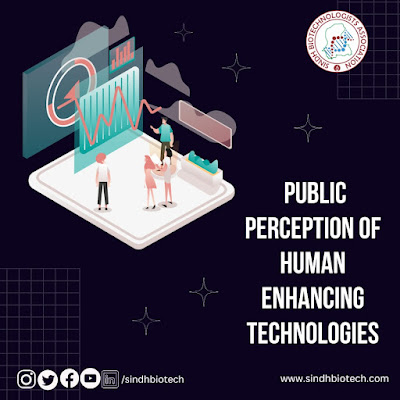Role of Biotechnology and Waste Management
INTRODUCTION: The world's population is predicted to increase to roughly 10 billion by 2050, up from around six billion now; substantial extra strain will be placed on existing resources. Environmental pollution is becoming one of the most serious issues confronting all countries across the world. Many therapeutic approaches are available through biotechnology to address the pollution problem. In waste management, biotechnology finds application sectors in the biological treatment of wastewaters and the composting of solid wastes. Biological approaches are also used to cure air pollution. [1] (ENGLANDE 2006)
WASTE GENERATION: Wastes generated by various activities can be gaseous, such as carbon dioxide (CO2), hydrogen supplied (H2S), and carbon monoxide (CO); liquid (e.g., industrial effluents); or solid (e.g. municipal waste). There is continuing biotechnological research employing microorganisms to clean up these air pollutants and eliminate odors. With rising population, urbanization, and industry, along with inappropriate disposal systems, the availability and overconsumption of relatively inexpensive agricultural goods and other utilities has contributed to the problems of environmental pollution .[2] (ONWURAH 2006)
WASTE MANAGEMENT: the "3 Rs" reduce; reuse and recycle classify the waste management strategies according to their desirability in terms of waste minimization. The goal of the waste management is to generate minimum amount of waste and extract the maximum practical benefits from products. Waste management consists of steps such as the storage, collection, transport and handling, recycling, disposal and monitoring of waste materials. [2] (ONWURAH 2006)
EFFLUENT TREATEMENT: Effluent is waste water that is treated or untreated flowing out of a factory, farm, commercial establishment or household into water bodies such as river lake, lagoon or sewer system. Effluents depend on the nature of the specific industry involved such as BOD loading of any organic components and the type of additional contaminants which may also be present.
•Chemical industry has a high COD in their wastewaters and is rich in various toxic compounds.
•Tannery water contains high BOD due to chromium component while the textile sector is another high BOD effluent producer due to the addition of surfactants, pesticides and dyes
SEWAGE TREATEMENT:
Four major types of wastewater are
1. Domestic/Municipal wastewater
2. Industrial
3. Urban runoff
4. Agricultural runoff
Waste water or sewage treatment usually consists of these stages:
• Preliminary treatment: Involves removal of large materials from the flow by shredding through comminuters & Grit removal
• Primary treatment: in primary treatment we remove the fine solids by means of settlement and sedimentation.
• Secondary treatment (Biological treatment): mainly involves oxidation. Treatment can be done through Percolating filter, activated sludge system and Stabilization ponds.
• Tertiary treatment: further sedimentation or additional processes like filtration, microfiltration, reverse osmosis and the chemical precipitation of specific substances [3] (KUMAR 2019)
SLUDGE TREATEMENT AND DISPOSAL:
Wastewater treatment facilities generate sludge or bio solids and other residual compounds. Aerobic & anaerobic digestion decreases the volume & quantity of sludge. It involves the following steps.
· Sludge thickening
· Sludge conditioning
· Sludge Dewatering
· Sludge Digestion & storage or disposal
TOXICITY REUSE AND CHARACTERIZATION:
Toxicity is an important factor in determining water quality-based criteria and the effects on biological treatment facilities. In terms of sustainability, effective analytical/biological procedures for water reuse applications are crucial. Enzyme biomarker development, endocrine disruptor studies (environmental estrogens), and probable carcinogen screening processes using fish and other non-mammalian species The purpose of an aquatic pathobiology research programmer is to investigate the use of fish and other non-mammals as environmental and biomedical models for carcinogenesis and reproductive/developmental impacts in fundamental risk assessment research. Other areas also include
· identification and quantification of influent/effluent toxicity
· methodologies of toxicity elimination/reduction alternatives which are more useful and cost effective
· evaluation of toxics' effects on treatment systems
· assessment of impacts on receiving waters' biological integrity and ecological function[1] (ENGLANDE 2006)
MICROBIAL FUEL CELL:
Another example of a biotechnology application is the Microbial Fuel Cell which not only assists with waste water management but also produces electricity. The energy produced in the form of electricity can be used in the operations of an effluent treatment plant.
A microbial fuel cell (MFC) is a bioreactor. It works by transforming chemical energy in organic compound chemical bonds into electrical energy by anaerobic microbe catalytic processes. [4] (GUDE 2016)
CONCLUSION: The third century presents both obstacles and opportunity for advancement toward sustainability. Biotechnology is a crucial component required to reach this aim. "Value-added" items derived from byproducts/waste, as well as revolutionary technologies based on biotechnological principles, represent sectors with tremendous potential. It might also serve as a point of reference for future evaluations of achievement. It is also critical to understand the significance and importance of public education/participation, as well as consistency in policy formulation.
By: Mariam Imran Mansuri
REFERENCES:
1. Englande, A.J. and Jin, G. (2006), "Application of biotechnology in waste management for sustainable development: An overview", Management of Environmental Quality, Vol. 17. https://doi.org/10.1108/14777830610670526
2. Onwurah, I. N. E., Ogugua, V. N., & Otitoju, O. F. (2006). Integrated environmental biotechnology-oriented framework for solid waste management and control in Nigeria. International Journal of Environment and Waste Management, 1(1), 94. doi:10.1504/ijewm.2006.011134
3. Sunil Kumar, Ashok Pandey, and Chapter 1 - Current Developments in Biotechnology and Bioengineering and Waste Treatment Processes for Energy Generation: An Introduction, Current Developments in Biotechnology and Bioengineering, 2019, ISBN 9780444640833,https://doi.org/10.1016/B978-0-444-64083-3.00001-4.
4. V.G. Gude, Microbial fuel cells for wastewater treatment and energy generation, Editor(s): Keith Scott, Eileen Hao Yu, Microbial Electrochemical and Fuel Cells, Woodhead Publishing, 2016, ISBN 9781782423751,https://doi.org/10.1016/B978-1-78242-375-1.00008-3.
B




Comments
Post a Comment